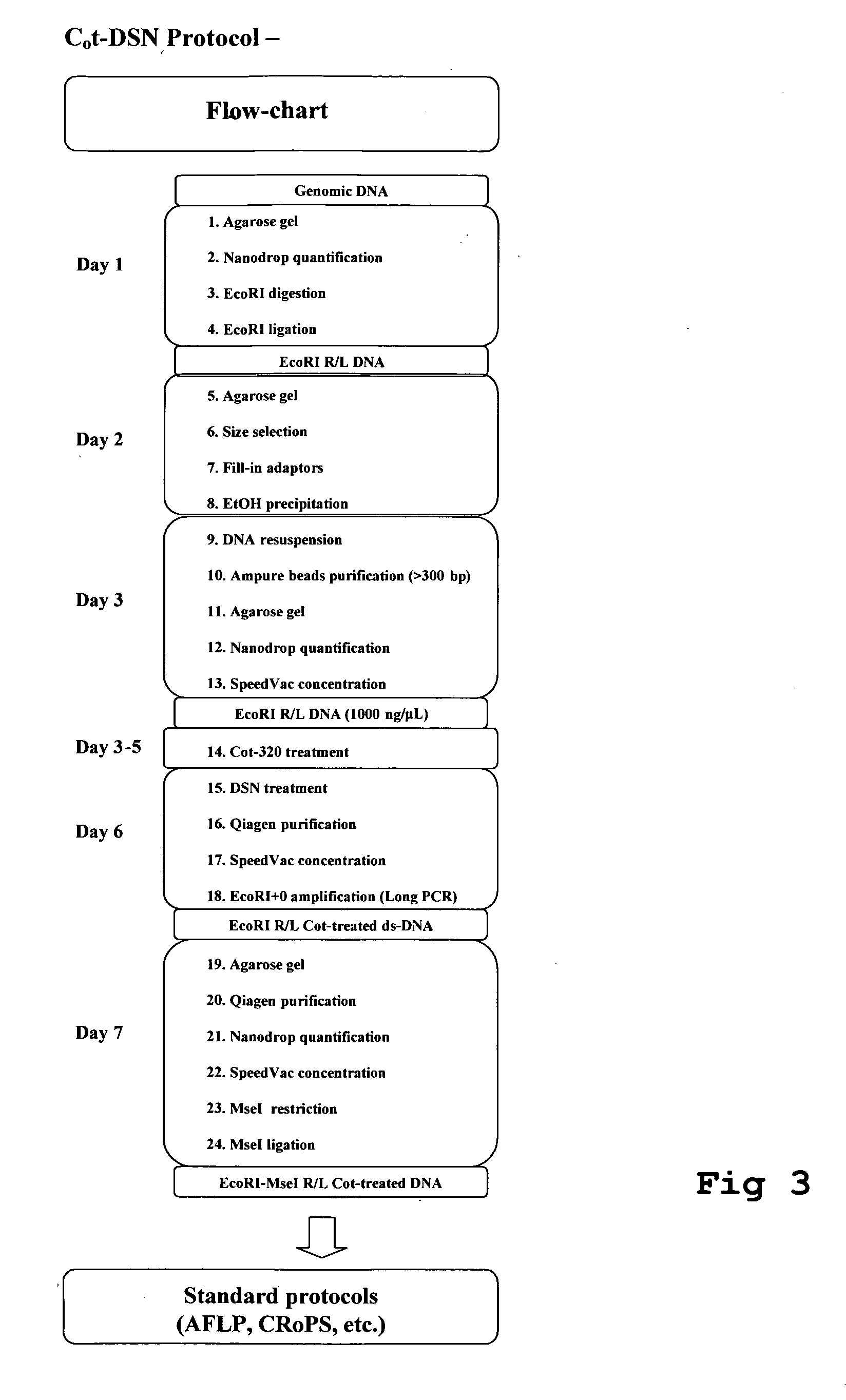Method for the reduction of repetitive sequences in adapter-ligated restriction fragments
a technology of restriction fragments and repetitive sequences, which is applied in the field of reducing repetitive sequences in adapter-ligated restriction fragments, can solve the problems of ineffective conversion, repetitive sequences that do not yield useful markers or snps, and achieve efficient capture of unique sequences, speed up the discovery of new genes, and improve the effect of conversion efficiency
- Summary
- Abstract
- Description
- Claims
- Application Information
AI Technical Summary
Benefits of technology
Problems solved by technology
Method used
Image
Examples
examples
[0049]The invention will now be explained by the following examples. It will be clear to the skilled man that variations on this protocol are possible without departing from the gist of the invention,[0050]1. Agarose gel
For DNA quality / integrity check, load 5 μl DNA (RNAse treated!) on a 1% agarose gel.[0051]2. Nanodrop quantification
For accurate quantification of DNA, dry and resuspend / Speedvacuum concentrate the DNA to 1000 ng / μL if necessary (minimum concentration of 114 ng / μL)[0052]3. EcoRI DNA digestion (60 μg DNA)
ReagentConc.Sample60 μg DNA1000 ng / μL60 μLEcoRI 50 U / μL6 μLOne-Phor-All 10x60 μLBSA 10 mg / μL3 μLDTT1M3 μLMilli Q water468 μLTotal volume600 μLTreat samples at 37° C. for 6 hours.
[0053]Use 5 U of EcoRI per μg DNA [standard AFLP protocol requires 25 U / μg DNA]
[0054]Amount of DNA can vary from a minimum of 20 μg to more than 100 μg (scalable)
[0055]Size-selection step between restriction and ligation is not performed[0056]4. EcoRI adapter ligation
ReagentConc.SampleEcoRI Ad...
PUM
 Login to View More
Login to View More Abstract
Description
Claims
Application Information
 Login to View More
Login to View More - R&D
- Intellectual Property
- Life Sciences
- Materials
- Tech Scout
- Unparalleled Data Quality
- Higher Quality Content
- 60% Fewer Hallucinations
Browse by: Latest US Patents, China's latest patents, Technical Efficacy Thesaurus, Application Domain, Technology Topic, Popular Technical Reports.
© 2025 PatSnap. All rights reserved.Legal|Privacy policy|Modern Slavery Act Transparency Statement|Sitemap|About US| Contact US: help@patsnap.com



